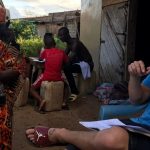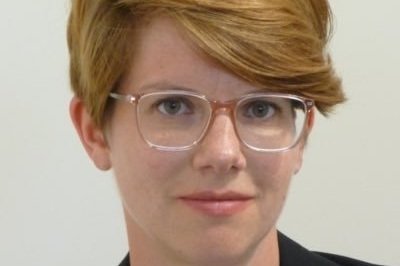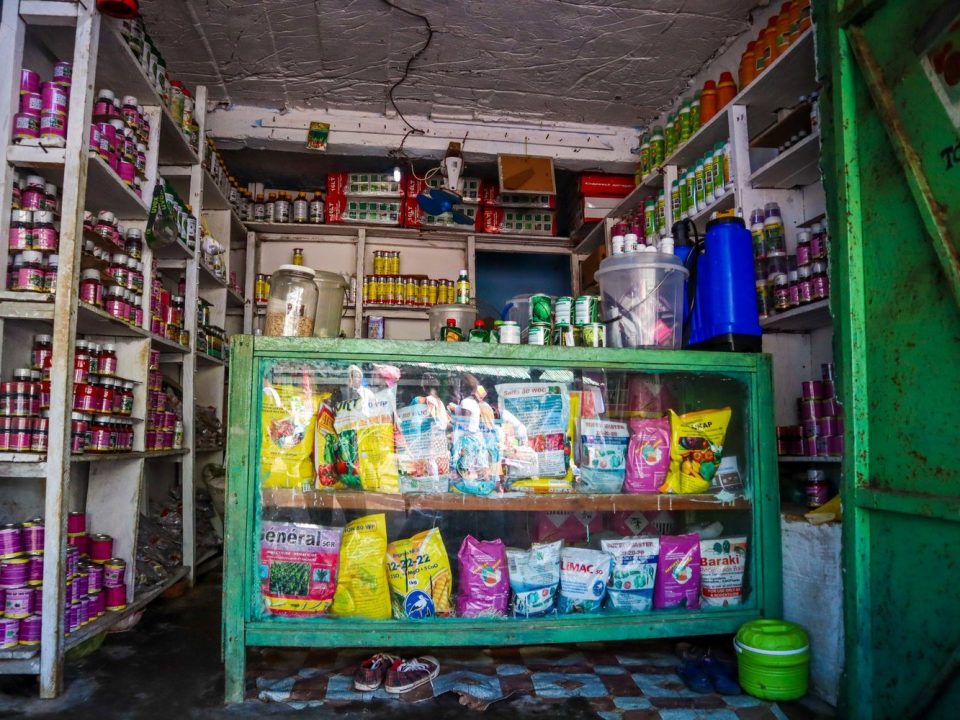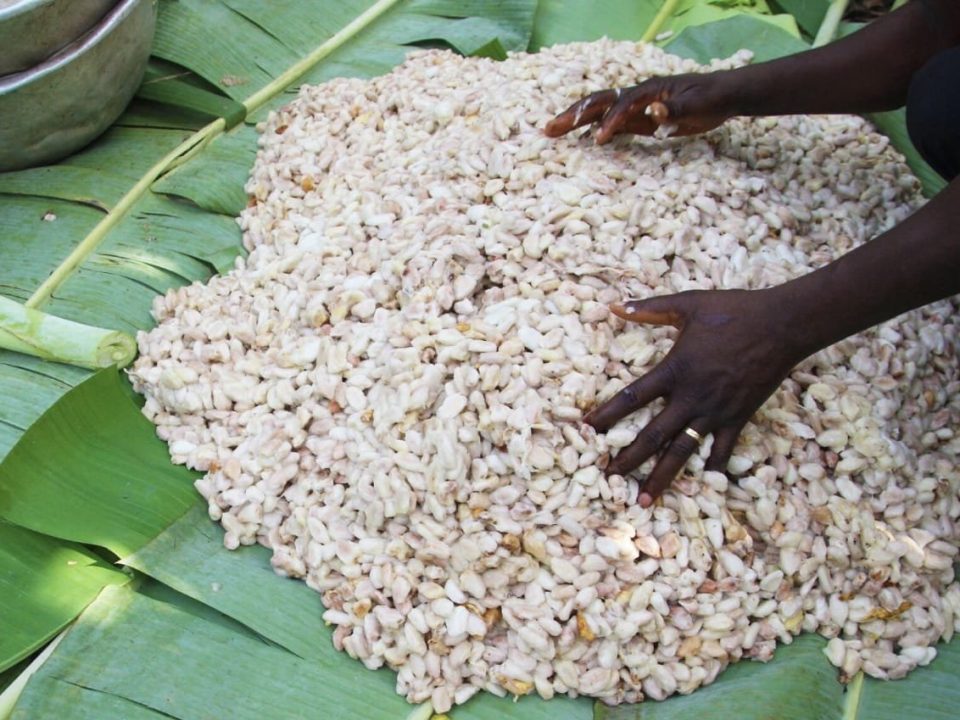
The importance of one-to-one coaching on Monleh’s path to premium
December 26, 2023
Using Gender Data to Translate Inclusion Strategies into Programming Reality
December 26, 2023By Sabine Garbarino
In much of the world, women power agriculture. About 60 percent of productive agricultural labour in sub-Saharan Africa is conducted by women (United Nations 2015). Similarly, almost 60 percent of Liberian vegetable farmers are estimated to be female. However, gender-specific barriers to land, agricultural inputs, financing and markets put female farmers at a significant disadvantage compared to their male counterparts – globally and in Liberia (Quisumbing and Pandolfelli 2010, Huyer 2017; Feed the Future 2019 and Witinok-Huber et al 2021). Closing the gender gap in agriculture would raise total agricultural output in developing countries by between 2.5 and 4 percent, which could in turn reduce the number of hungry people in the world by 12–17 percent. (FAO 2011)
Recognizing the importance of women in agriculture, donor-funded economic development programmes are often tasked with delivering results for women specifically. Gender targets are typically integrated into logframes, measurement systems, and reporting – incentivizing programs to strive for inclusion. However, these requirements do not necessarily ensure that programmes and teams actively use gender metrics in their daily work to inform, adapt, and deliver – and thus at times resulting in a failure to fully deliver inclusion and empowerment in practice.
GROW Liberia is an agribusiness and investment advisory programme that aimed to facilitate inclusive growth within Liberia’s agricultural markets. In its journey to improve programming outcomes for women, GROW found that strong gender data, coupled a process that systematises its use, was key to translating its inclusion strategy and ambition into programming reality. Sex-disaggregated information and evidence on invisible (and often ignored) experiences and roles of female farmers provided the programme with a holistic picture of farming in Liberia and exposed stereotypes and bias. Moreover, gender data enabled GROW to promote actionable recommendations to support gender equality within its interventions and influence partners to pursue inclusive business models that target women as consumers, entrepreneurs and employees.
Gender data improves the visibility of women in agriculture
Insufficiently understanding rural women’s access to and management of resources, the diversity of their income sources and how they use their time, means that women are not being counted and thus women and their work remains invisible (Mohamedou 2020, Criado Perez 2019).
One example of this are so-called “male” and “female” crops, a notion that is stubbornly prevalent across agricultural development in Africa. In this stylised view, men as family providers grow cash crops and women, responsible for feeding the family, grow subsistence crops (e.g. Guendel 2009; Schuster and Lambrecht 2017).
Suspecting that the reality of a gendered division of labour within farming households is more complex, GROW built on its Gender & Youth Strategy and analysis undertaken as part of this and set out to investigate the common assumption that rubber, one of the sectors GROW was investing in at the time, was largely male with women playing a negligible role. GROW’s gendered value chain analysis showed that while men are found in highly visible roles as farm owners and tappers and dominate activities that provide better income, such as selling rubber or holding supervisory positions, women are far from absent from the sector. Titled “Hidden Roles but Visible Value”, GROW’s research uncovered the numerous and essential roles women play across the value chain and demonstrated that women are seen as efficient tappers and reliable workers by some commercial farms. The research also uncovered the often ignored support roles women play, such as cooking for men during harvesting, looking after children and general housework—roles that allow men to be more productive farmers.
Gender data provided the necessary visibility for female roles in what would have otherwise remained hidden behind simplified notions of so-called “male” crops. Challenging these assumptions helped to adjust programme support (e.g. specifically targeting young female farmers as recruits into TVET programmes) but also provided much-needed contextual and sector-specific evidence to inform an intra-team conversation on male and female roles and unequal access to agricultural services.
Gender data improves the quality of programme delivery
Good gender data alone is not enough to address the barriers women face when they try to access agricultural services or programme innovations. Data needs to be coupled with sharp analysis and action to foster inclusion.
GROW was able to make active use of its gender data by closely integrating its monitoring and results measurement (MRM) system with implementation and sector strategies. Data was produced through a combination of quantitative data supplied by partners (facilitated by sector teams) or generated through the MRM system and qualitative research. While the former produced numbers and metrics that could be generalised, the later enabled the explanation of patterns and relationships through in-depth contextual evidence. These case studies were undertaken in a joint effort between MRM staff, gender advisors and implementation teams, with collaborative learning and finding practical solutions for greater inclusion at the centre of these efforts.
For example, in 2019, GROW’s monitoring data showed that only 47% of farmers trained in good agricultural practices (GAP) were female – where about 60% of vegetable farmers in Liberia are female. The data also pointed to large geographical differences, with the proportion of female farmers trained in Lofa and Montserrado being close to 60% and as low as 39% in Nimba. A follow-up qualitative assessment uncovered a range of reasons for women not attending training, such as not being aware, being “out selling” or looking after children. Pressured for time, many women prioritised short-term income earning requirements over long-term benefits for themselves and their families. All-female focus group discussions also uncovered a case in Nimba where women assured the GROW researchers they were part of the training, but it later transpired that they had been cooking for the men rather than being trained. Support was subsequently provided to programme partners to increase communication, be more cognisant of the timings of trainings to coincide with meeting days of cooperatives or women’s (savings) groups (and avoiding market days), and utilising female trainers and lead farmers. Owed to these adaptations at the partner level, the latest data from 2021 revealed that 57 percent of farmers trained were female. Transferring these learnings on gender-responsive GAP to the cocoa sector, where women are less visible than in vegetable farming, further resulted in an increase of the proportion of female cocoa farmers trained from 21 to 36 percent between 2018 and 2019.
Similar research also helped GROW to inform a recruitment drive for female Village Coordinators (VCs) selected by cooperatives to train cocoa farmers. Starting with one single female VC in April 2019, a more hands-on role by GROW led to 303 by September 2019, representing 47% of VCs across the participating cooperatives. Data was further used to investigate a supposedly high drop-out by female VCs and uncovered the consequences of social norms and structural barriers to upgrading female roles in agriculture.
Gender data enables an inclusive business model approach to influence partners
As a market systems development programme working with private sector partners, GROW Liberia actively looked for innovations that had potential for large-scale change while being financially sustainable beyond the life of the programme. Inclusive business models that make poor farmers—and female farmers in particular—part of the core business vision and strategy were therefore the focus of much of GROW’s work on gender equality. By targeting women as consumers (e.g. farmers purchasing inputs), employees (e.g. workers on commercial farms) or entrepreneurs as part of value chains (e.g. in cocoa production), GROW coupled commercial viability with inclusion and impact. Much of the available evidence to build a business case for inclusion uses metrics aligned with business incentives to show what the private sector can gain when inclusion is integrated into business decisions (e.g. AWEF 2019, IFC 2017, Feed the Future 2021).
Demonstrating the value of inclusion by calculating and analysing returns to investment sounds simple. But, programmes like GROW operate in data-poor environments and collaborate with small businesses and organisations, like agro dealers or cocoa cooperatives, that typically have little or no bookkeeping in place and lack data analytics skills. As bookkeeping training was an essential ingredient of GROW’s agro-dealer development programme, it also provided a prime opportunity to collect sex-disaggregated data on farmers and improve agro-dealers’ understanding of who their customers were, where they could reach them and how to adjust their advice depending on their clients’ needs.
Data tracking and analysis was incentivised by GROW through competitions on sales, new client acquisition or female farmer engagement. Over the years, GROW was therefore able to provide a compelling business case for agro-dealers to target female farmers as a traditionally underserved customer segment. In fact, agro-dealers’ female clients have grown by 120 percent (while the overall client base has doubled). So, at the end of 2019, female clients accounted for 33% of agro-dealers’ total client base (up from 28% in the previous year). Similarly, GROW evidence showed that including female farmers in good agricultural practice training resulted in 36% higher cocoa yields for farming families.
Data and compelling commercial arguments can be a convincing means to incentivise partners to pursue inclusive business strategies and target women, in this case as clients of agro-dealers. However, limited literacy and numeracy (in particular among female entrepreneurs) means that the generation and supply of data needs to be combined with capacity building to foster an appreciation and understanding of data to guide business decisions. GROW’s bookkeeping training and hands-on mentoring over several years enabled the data to be part and parcel of the programme’s business development support to the agro-dealers (rather than a one-time supply of information which rarely leads to behavioural change).
Conclusion
Gender data works! It is the basic information to be accountable for programme results, can prompt and inform changes to interventions and strategy, puts the spotlight on what would otherwise remain invisible roles and activities, helps to uncover bias and provides an important piece in the puzzle of partner influencing strategies.
For GROW Liberia, actionable gender data was the engine to fuel the programme’s journey towards more inclusive programming. The consequence of more and better data was visible through disaggregated indicators, qualitative studies and insights or estimates of the commercial value of inclusion for companies.
Furthermore, gender data also resulted in less tangible impact: research was frequently done in collaboration between gender specialists, intervention and sector teams and MRM experts—the data collection process itself provided a platform for multi-disciplinary learning and knowledge exchange that paved the way for a shared commitment and responsibility to act upon gender data and evidence and challenge bias. Producing and acting upon high quality gender data incentivised teamwork between gender specialists, intervention teams and MRM experts that enabled us to translate gender concepts and theory into concrete and context-specific actions and results—backed up by leadership commitment and shared responsibility.
Gender data alone is not a magic bullet to solve inequality. However, closing the gender data gap is a powerful first step and an essential ingredient of truly inclusive programming that delivers results for women and girls.
References
Arab Women’s Enterprise Fund (2019). Working with the Private Sector to Empower Women: What to Measure and How to Build the Business Case for Change. AWEF.
Criado Perez, C. (2019). Invisible Women. Exposing data bias in a world designed for men. Chatto & Windus.
Data2x. What is gender data? https://data2x.org/what-is-gender-data/
DHS (2020). Liberia. Demographic and Health Survey 2019-20. Available here.
FAO (2011). The state of food and agriculture. Women in agriculture. Closing the gender gap. FAO.
Feed the Future (2019). Women’s Empowerment Fact Sheet. USAID.
Feed the Future (2021). The Return on Investment of Social Inclusion. An Evidence Gap Analysis from Developing Countries. USAID.
Garbarino, S. and K. Asuni (2021). Disability Inclusion in Economic Development Programs: Insights from Nigeria. Blog for SEEP Network.
Garbarino, S. et al (2020). Agricultural Inputs in Liberia. An Inclusive Business Model to Close the Gender Gap. GROW Liberia.
Garbarino, S. et al (2020). Boosting Yields and Income. The Business Case for Supporting Female Cocoa Farmers in Liberia. GROW Liberia.
GROW (2016). Gender and Youth Strategy. GROW.
GROW Liberia (2018). Hidden Roles but Visible Value: Women in the Rubber Sector. GROW Insights.
Guendel, S. (2009). What are “women’s crops”, and why? FAO Gender Insights.
Hearle, C. at al (2020). Measurement of Women’s Economic Empowerment (WEE). A stocktake of existing practices in measuring WEE in DFID/HMG economic development programmes. Work and Opportunities for Women.
Huyer, S. (2017). Closing the Gender Gap in Agriculture. In: Gender, Technology and Development 20 (2): 105-116.
International Finance Cooperation (2017). Investing in Women. New Evidence for the Business Case. IFC.
Meaney-Davis, J. and S. Coe (2020). Addressing barriers to employment for people with disabilities: evidence and lessons learned. Disability Inclusion Helpdesk Query. Social Development Direct.
Mohamedou, E. I. (2020). Where are the women? Filling the gap in sex-disaggregated data in agriculture. Data 2x.
Quisumbing, A. and L. Pandolfelli (2010). Promising Approaches to Address the Needs of Poor Female Farmers: Resources, Constraints, and Interventions. In: World Development 38 (4): 581-592.
Schuster, M. and I. Lambrecht (2017). Gender roles in agriculture: did anything change? Blog for CGIAR Research Program on Agriculture for Nutrition and Health.
United Nations (2015). Trends and Statistics. United Nations.
Witinok-Huber, R. et al (2021). Gender, place, and agricultural extension: a mixed-methods approach to understand farmer needs in Liberia. In: The Journal of Agricultural Education and Extension 27 (4): 553-572.
About GROW Liberia
GROW is an agribusiness and investment advisory agency that partners with businesses, investors, associations and government agencies to accelerate inclusive economic returns within high-growth industries in Liberia.
Data to investigate female Village Coordinators (VCs) dropout
By the end of 2019, GROW’s monitoring data showed that 42% of female VCs did not record training farmers, compared to 4% of their male counterparts. This raised questions about what had driven female VC drop-out. However, during a follow-on study of 96 supposedly inactive female VCs conducted in February 2020, over 90% reported that they had in fact trained farmers despite the records suggesting otherwise. Due to issues of illiteracy (in rural Liberia, only 33 % of adult women are literate compared to over 60% of men, according to the 2019-20 Demographic and Health Survey), these women reported providing the names of the farmers they had trained to their male VC counterparts, some of whom appear to have recorded them under their own names and were consequently rewarded by their cooperative for high performance.
While low dropout is great news, this example highlights how underlying structural inequalities— expressed in this instance by a large gender gap in literacy—manifest themselves during programming designed to be gender-responsive and inclusive. It also serves to highlight how power imbalances between men and women are not easily shifted through relatively short-term interventions. Cooperatives managed to successfully recruit and retain female VCs and put out a clear message that they are not the males’ deputies. However, the apparent tendency of some men to claim “female numbers” under their name and benefit, and the inability of the female VCs to do anything about it, highlights gender inequality underpinned by powerful social norms that are difficult to change.




